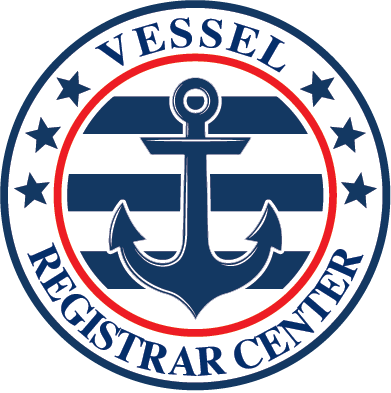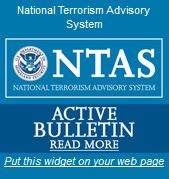25.30-1 Applicability.
- The provisions of this subpart, with the exception of §§ 25.30-80 and 25.30-90 of this subpart, as applicable, apply to all vessels contracted for on or after August 22, 2016.
- Vessels contracted for prior to August 22, 2016 and after November 19, 1952, must meet the requirements of 46 CFR 25.30-80.
- Vessels contracted for prior to November 19, 1952, must meet the requirements of 46 CFR 25.30-90.
[USCG-2012-0196, 81 FR 48245, July 22, 2016]
25.30-5 General provisions.
- Where equipment in this subpart is required to be of an approved type, such equipment requires the specific approval of the Commandant. Such approvals are published in the Federal Register, and in addition, are contained in Coast Guard publication COMDTINST M16714.3 (Series), Equipment Lists.
- All hand portable fire extinguishers, semiportable fire extinguishing systems, and fixed fire extinguishing systems shall be of an approved type.
[CGFR 65-50, 30 FR 16653, Dec. 30, 1965, as amended by CGD 96-041, 61 FR 50726, Sept. 27, 1996]
25.30-10 Portable fire extinguishers and semi-portable fire extinguishing systems.
- Portable and semi-portable extinguishers must be inspected and maintained in accordance with NFPA 10 (incorporated by reference, see § 25.01-3).
- Certification or licensing by a state or local jurisdiction as a fire extinguisher servicing agency will be accepted by the Coast Guard as meeting the personnel certification requirements of NFPA 10 for annual maintenance and recharging of extinguishers.
- Monthly inspections required by NFPA 10 may be conducted by the owner, operator, person-in-charge, or a designated member of the crew.
- Non-rechargeable or non-refillable extinguishers must be inspected and maintained in accordance with NFPA 10; however, the annual maintenance need not be conducted by a certified person and can be conducted by the owner, operator, person-in-charge, or a designated member of the crew.
- The owner or managing operator must provide satisfactory evidence of the required servicing to the marine inspector. If any of the equipment or records has not been properly maintained, a qualified servicing facility must perform the required inspections, maintenance procedures, and hydrostatic pressure tests. A tag issued by a qualified servicing organization, and attached to each extinguisher, may be accepted as evidence that the necessary maintenance procedures have been conducted.
- Vaporizing-liquid type fire extinguishers containing carbon tetrachloride, chlorobromomethane, or other toxic vaporizing liquids are not acceptable as equipment required by this subchapter.
- Portable or semi-portable extinguishers, which are required on their name plates to be protected from freezing, must not be located where freezing temperatures may be expected.
- The use of dry chemical, stored pressure, fire extinguishers not fitted with pressure gauges or indicating devices, manufactured prior to January 1, 1965, may be permitted on motorboats and other vessels so long as such extinguishers are maintained in good and serviceable condition. The following maintenance and inspections are required for such extinguishers:
- When the date on the inspection record tag on the extinguishers shows that 6 months have elapsed since the last weight check ashore, then such extinguishers are no longer accepted as meeting required maintenance conditions until they are reweighed ashore, found to be in a serviceable condition, and within required weight conditions.
- If the weight of the container is 1/4 ounce less than that stamped on the container, it must be serviced.
- If the outer seal or seals (which indicate tampering or use when broken) are not intact, the boarding officer or marine inspector will inspect such extinguishers to see that the frangible disc in the neck of the container is intact; and if such disc is not intact, the container must be serviced.
- If there is evidence of damage, use, or leakage, such as dry chemical powder observed in the nozzle or elsewhere on the extinguisher, the extinguisher must be serviced or replaced.
- Dry chemical extinguishers, stored pressure extinguishers, and fire extinguishers without pressure gauges or indicating devices manufactured after January 1, 1965, cannot be labeled with the marine type label described in 46 CFR 162.028-4. These extinguishers manufactured after January 1, 1965, may be carried onboard motorboats or other vessels as excess equipment.
- Semi-portable extinguishers must be fitted with a suitable hose and nozzle, or other practicable means, so that all portions of the space concerned may be covered.
[USCG-2012-0196, 81 FR 48245, July 22, 2016]
25.30-15 Fixed fire extinguishing systems.
- When a fixed fire extinguishing system is installed, it must be a type approved or accepted by the Commandant (CG-ENG-4) or the Commanding Officer, U.S. Coast Guard Marine Safety Center.
- If the system is a carbon-dioxide type, then it must be designed and installed in accordance with subpart 76.15 of part 76 of subchapter H (Passenger Vessels) of this chapter.
- If the system is an automatic sprinkler system then it must be designed and installed in accordance with Chapter 25 of NFPA 13 (incorporated by reference, see § 25.01-3).
[USCG-2012-0196, 81 FR 48245, July 22, 2016]
25.30-20 Fire extinguishing equipment required.
- Motorboats.
- All motorboats must carry at least the minimum number of portable fire extinguishers set forth in table 25.30-20(a)(1), except that motorboats less than 26 feet in length, propelled by outboard motors and not carrying passengers for hire, need not carry portable fire extinguishers if the construction of the boats will not permit the entrapment of explosive or flammable gases or vapors.
Table 25.30-20(A)(1)
| Length, feet | Minimum number of 5-B portable fire extinguishers required1 | |
| No fixed fire extinguishing system in machinery space | Fixed fire extinguishing system in machinery space | |
| Under 16 | 1 | 0 |
| 16 and over, but under 26 | 1 | 0 |
| 26 and over, but under 40 | 2 | 1 |
| 40 and over, but not over 65 | 3 | 2 |
1 One 20-B portable fire extinguisher may be substituted for two 5-B portable fire extinguishers.

- The intent of this regulation is illustrated in Figure 25.30-20(a1) where fire extinguishers are required if any one or more of the specified conditions exist, and in Figure 25.30-20(a2) where specified conditions do not, in themselves, require that fire extinguishers be carried.

Figure 25.30-20( A 2)
Fire extinguishers are required if any one or more of the following conditions exist (numbers identifying conditions are the same as those placed in Figure 25.30-20 (a1)):
- Closed compartment under thwarts and seats wherein portable fuel tanks may be stored.
- Double bottoms not sealed to the hull or which are not completely filled with flotation material.
- Closed living spaces.
- Closed stowage compartments in which combustible or flammable materials are stowed.
- Permanently installed fuel tanks.
Figure 25.30-20( A 2)
The following conditions do not, in themselves, require that fire extinguishers be carried (numbers identifying conditions are the same as those placed in Figure 25.30-20(a2)):
- Bait wells.
- Glove compartments.
- Buoyant flotation material.
- Open slatted flooring.
- Ice chests.
- Table 25.30-20(a)(1) of this section indicates the minimum quantity and type of extinguisher to be carried. Extinguishers with larger numerical ratings or multiple letter designations may be used if the extinguishers meet the requirements of the table.
- Uninspected passenger vessels of at least 100 gross tons. All uninspected passenger vessels of at least 100 gross tons must carry onboard portable and semi-portable fire extinguishers per table 76.50-10(a) in § 76.50-10 of this chapter.
- Motor vessels.
- All motor vessels must carry at least the minimum number of portable fire extinguishers set forth in table 25.30-20(b) (1).
Table 25.30-20(B)(1)
| Gross tonnage – | Minimum number of 20-B portable fire extinguishers | |
| Over | Not over | |
| 50 | 1 | |
| 50 | 100 | 2 |
| 100 | 500 | 3 |
| 500 | 1,000 | 6 |
| 1,000 | 8 | |
- In addition to the portable fire extinguishers required by paragraph (b)(1) of this section, the following fire extinguishing equipment must be fitted in the machinery space:
- One Type 20-B portable fire extinguisher must be carried for each 1,000 B. H. P. of the main engines or fraction thereof. However, not more than 6 such extinguishers need be carried.
- On motor vessels of over 300 gross tons, either one 160-B semi-portable fire extinguishing system must be fitted, or alternatively, a fixed fire extinguishing system must be fitted in the machinery space.
- The frame or support of each 160-B fire extinguisher required by paragraph (b)(2)(ii) of this section must be welded or otherwise permanently attached to a bulkhead or deck.
- If an approved semi-portable fire extinguisher has wheels, it must be securely stowed when not in use to prevent it from rolling out of control under heavy sea conditions.
- Table 25.30-20(b)(1) of this section indicates the minimum quantity and type of extinguisher to be carried. Extinguishers with larger numerical ratings or multiple letter designations may be used if the extinguishers meet the requirements of the table.
- In addition to the portable fire extinguishers required by paragraph (b)(1) of this section, the following fire extinguishing equipment must be fitted in the machinery space:
- Barges carrying passengers.
- Every barge of 65 feet in length or less while carrying passengers when towed or pushed by a motorboat, motor vessel, or steam vessel must be fitted with portable fire extinguishers as required by table 25.30-20(a)(1), depending upon the length of the barge.
- Every barge of over 65 feet in length while carrying passengers when towed or pushed by a motorboat, motor vessel, or steam vessel must be fitted with portable fire extinguishers as required by table 25.30-20(b)(1), depending upon the gross tonnage of the barge.
[CGFR 65-50, 30 FR 16653, Dec. 30, 1965, as amended by CGD 77-039, 44 FR 34132, June 14, 1979; CGD 97-057, 62 FR 51042, Sept. 30, 1997; USCG-1999-5040, 67 FR 34776, May 15, 2002; USCG-2012-0196, 81 FR 48246, July 22, 2016]
25.30-80 Location and number of fire extinguishers required for vessels constructed prior to August 22, 2016.
Vessels contracted for prior to August 22, 2016 must meet the following requirements:
- Previously installed extinguishers with extinguishing capacities smaller than what is required in tables 25.30-20(a)(1) and 25.30-20(b)(1) of this subpart need not be replaced and may be continued in service so long as they are maintained in good condition to the satisfaction of the Officer in Charge, Marine Inspection.
- All new equipment and installations must meet the applicable requirements in this subpart for new vessels.
[USCG-2012-0196, 81 FR 48246, July 22, 2016]
25.30-90 Vessels contracted for prior to November 19, 1952.
- Vessels contracted for prior to November 19, 1952, shall meet the applicable provisions of §§ 25.30-5 through 25.30-20 insofar as the number and general type of equipment is concerned. Existing items of equipment and installations previously approved but not meeting the applicable requirements for type approval may be continued in service so long as they are in good condition. All new installations and replacements shall meet the requirements of §§ 25.30-5 through 25.30-20.
- [Reserved]




